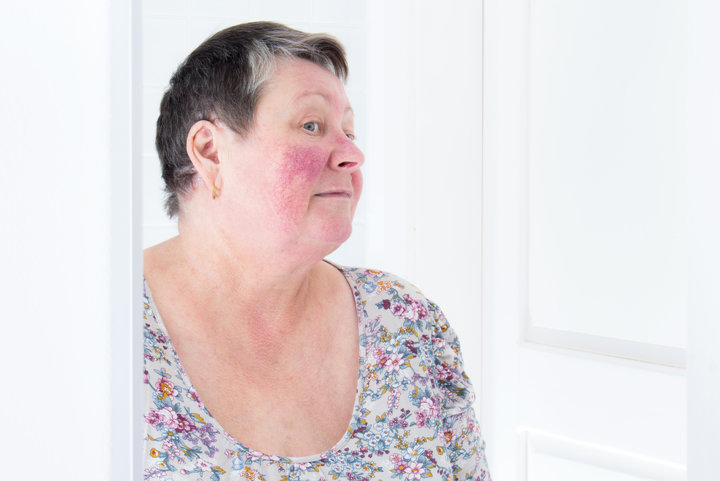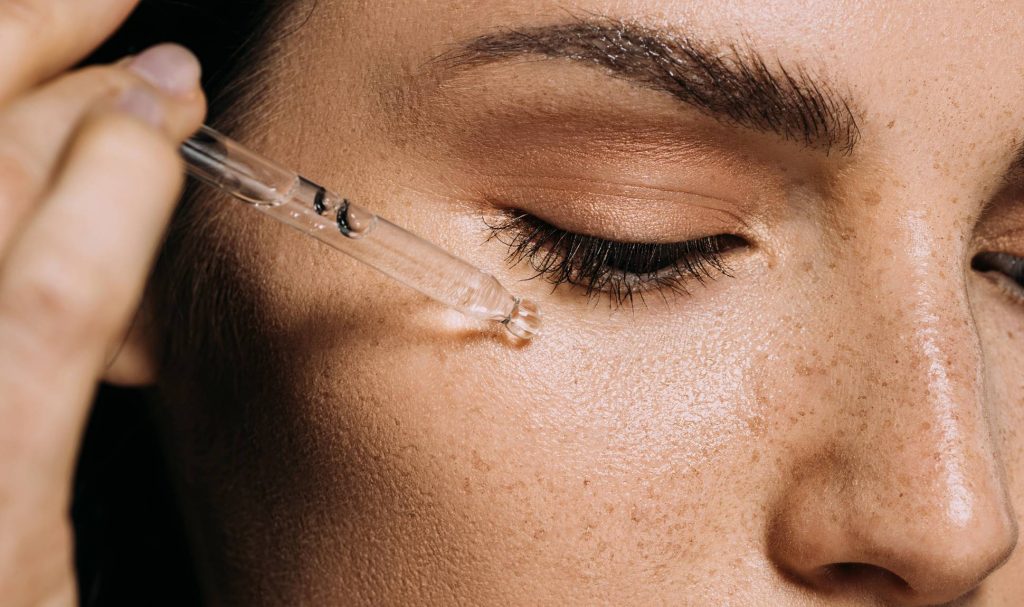Rosacea is a skin condition that currently affects over 14 million Americans and it usually begins to appear in people over the age of 30. It’s generally characterized by redness on the forehead, nose, cheeks and chin. Sufferers can also develop ruddy skin, prominent blood vessels, pimples and, most surprisingly to some, eye problems. But if left untreated, some of the most severe ― and rare ― cases of rosacea can leave sufferers blind.
“Rosacea is a highly inflammatory condition affecting the face and commonly causes eye irritation, feeling like grittiness, stinging, or swelling of the eyelid,” Dr. Ellen Marmur, president and founder of Marmur Medical and associate clinical professor at Mount Sinai Medical Center, told HuffPost.
“There are many types of rosacea, from common flushing to acneiform rosacea (pink pimples on the cheeks, nose and chin with dry, sensitive skin) to rhinophymatous rosacea (the classic large nose with big pores like W.C. Fields, due to years of inflammation causing the soft tissue of the nose to grow thicker),” Marmur said. “All of the most severe cases of each subtype may lead to ocular rosacea and rarely to blindness.”
She added that ocular (or eye) rosacea is prevalent in up to 58 percent of current rosacea sufferers, more commonly among men.
“Rosacea increases the number of small blood vessels in the eyelids, blockage of the meibomian glands (glands on the edge of the eyelid that add a little oil to the tears so they last longer and keep the eye nice and moist), and dryness of the eye which may ultimately lead to thickening of the cornea called rosacea keratitis,” Marmur said. Basically, it boils down to this:
“When rosacea flares up, it blocks the glands and the tears evaporate faster without the natural oils, leading to dry eyes and blepharitis,” she explained. “This leads to itchy, dry eye and flakey red eyelids.”
Again, while cases of rosacea that leads to blindness are extremely rare, it’s important to be very aware of your skin and certain symptoms if you have rosacea and develop a treatment plan with your dermatologist. You can tell that your rosacea is worsening (or reaching the point that it’s very severe) when you experience persistent flushing, redness or broken blood vessels, according to Marmur.
“The skin appears swollen or congested. The eyes are very uncomfortable and vision may even become impaired,” she said. “Early anti-inflammatory creams and medicines truly help prevent these serious endpoints of rosacea.”
In order to keep your rosacea under control, try avoiding triggers like heat and alcohol, wear sunscreen and find a treatment that works for you.
“Prescription creams or gels such as Rhofade, a new vasoconstrictor, or Finacea, an anti-inflammatory, help tremendously,” Marmur said. “Lasers that eliminate excess superficial blood vessels are also extremely effective.”
Whatever you do, just do something.




